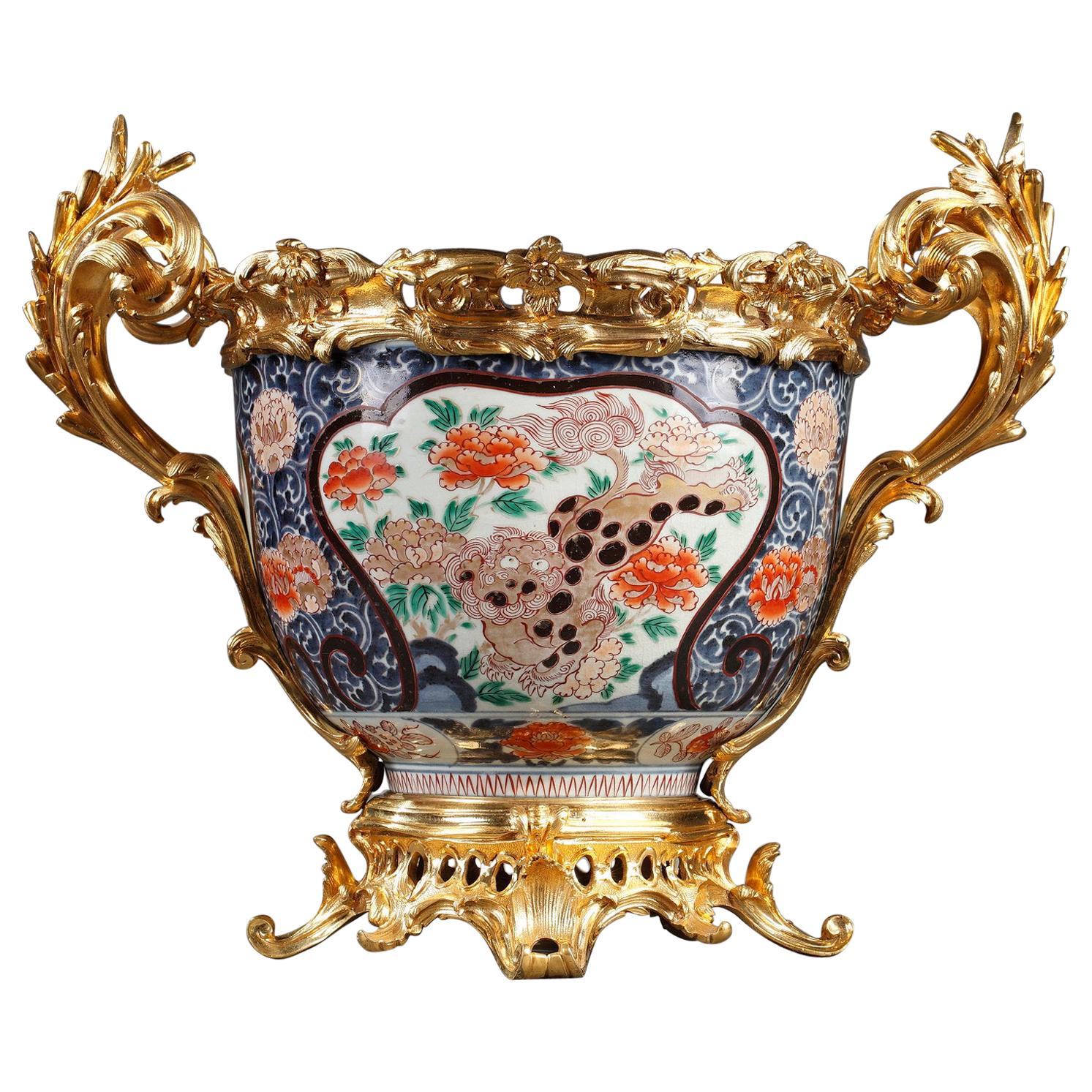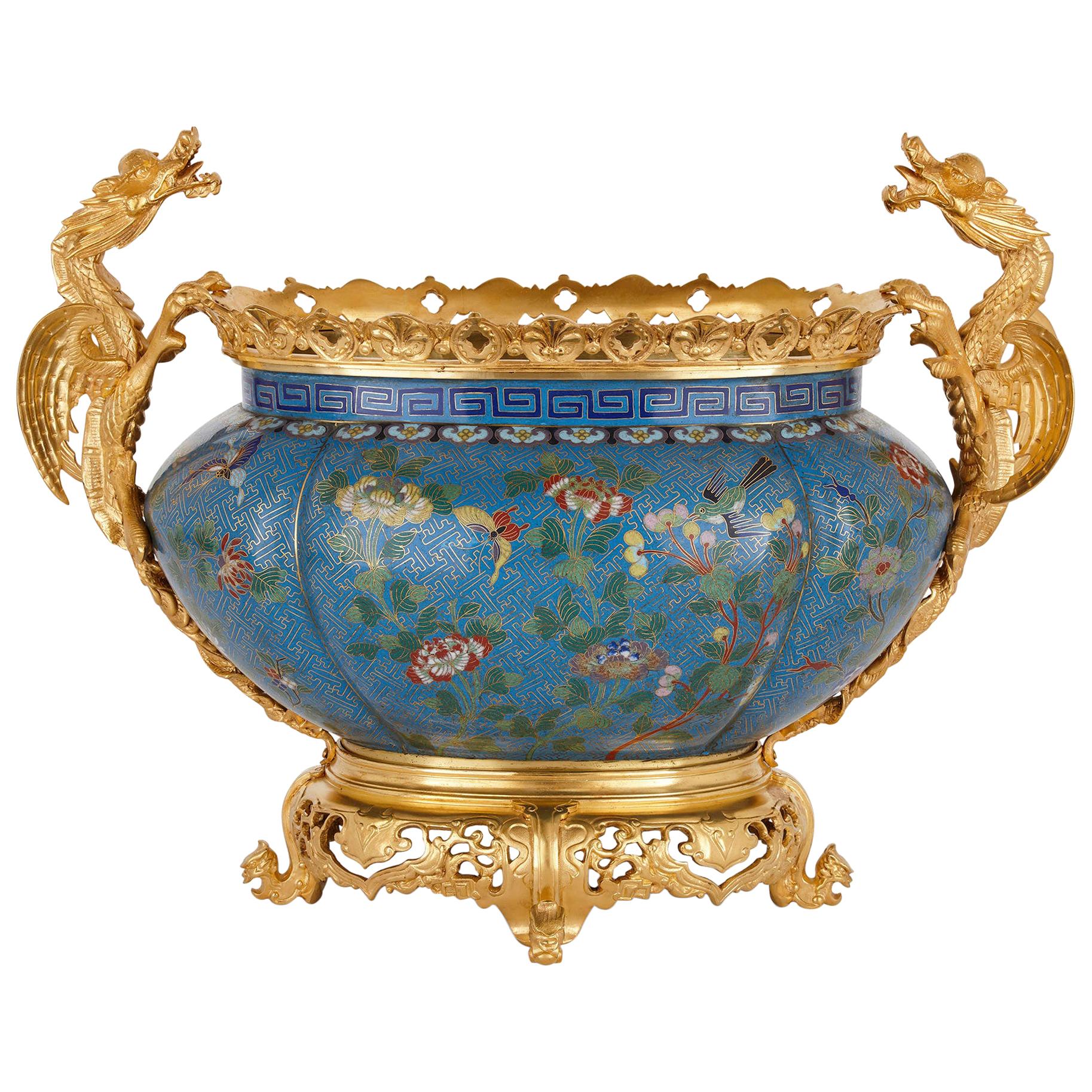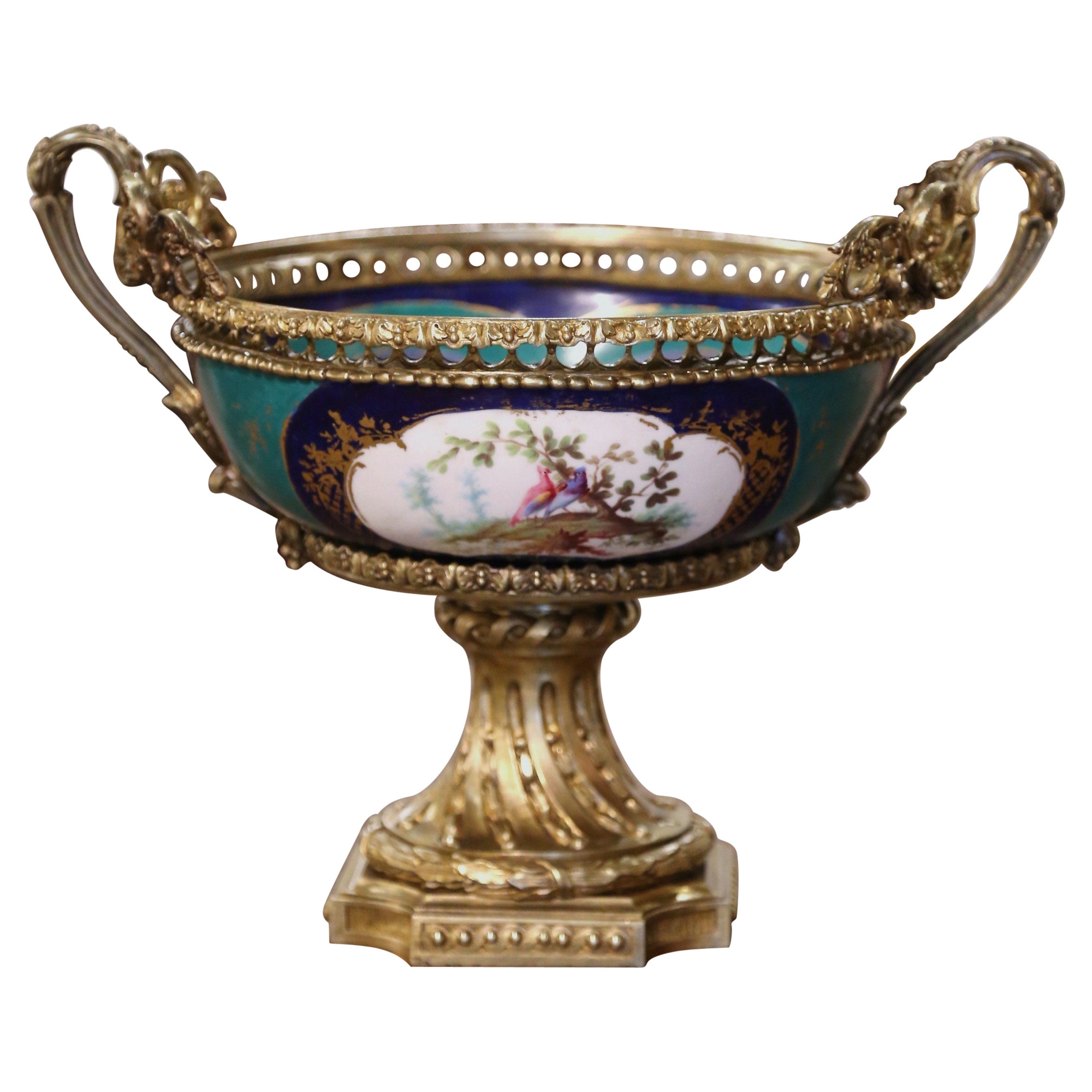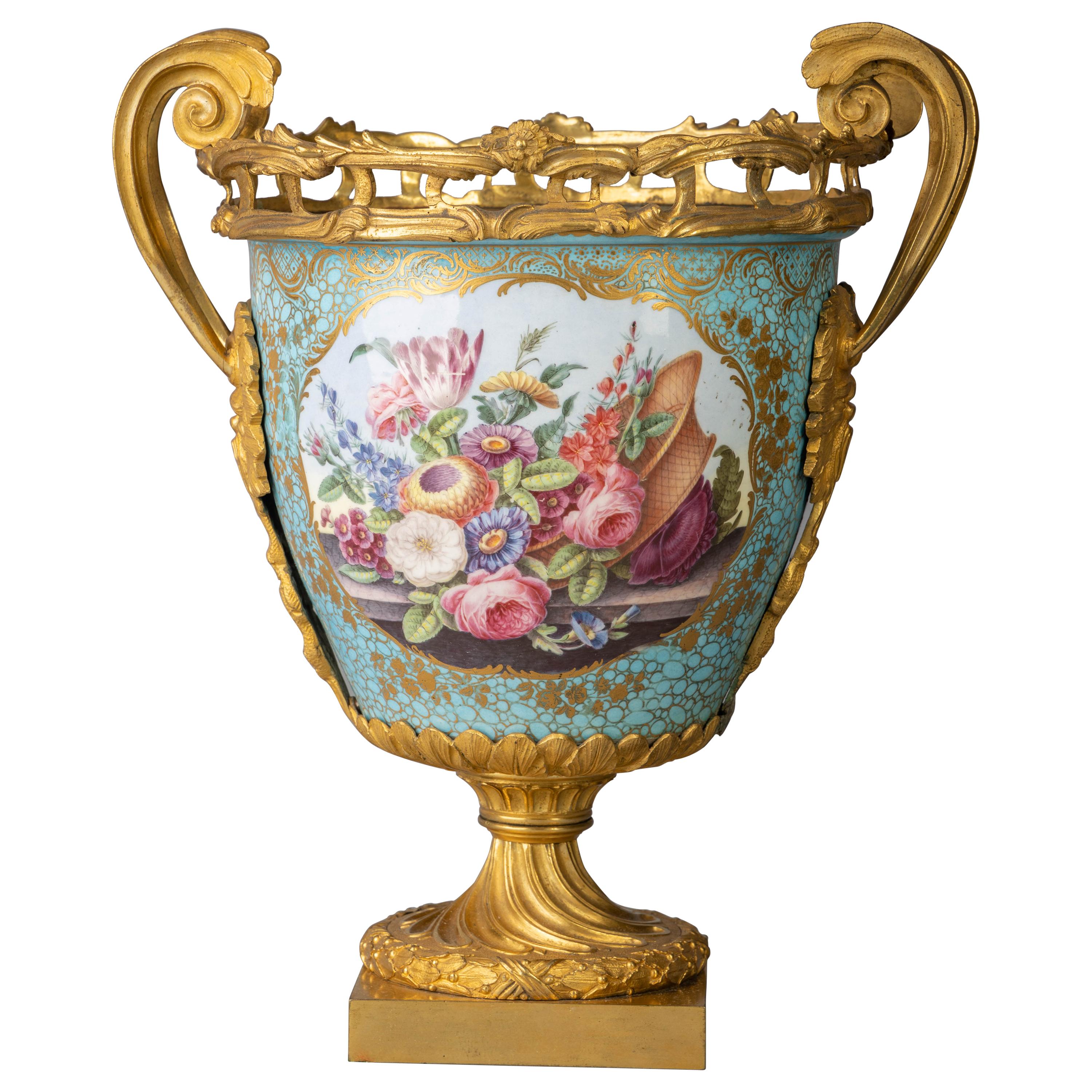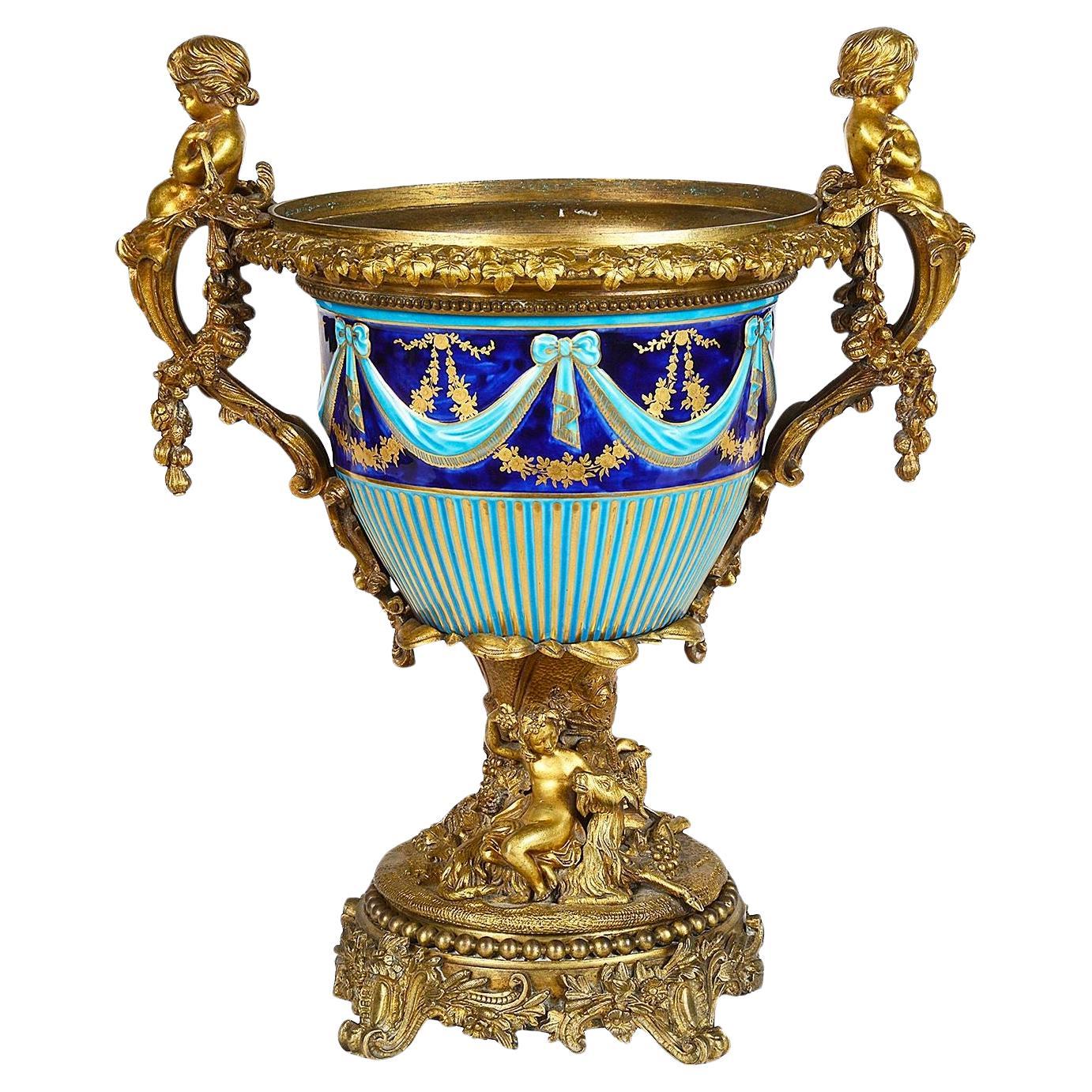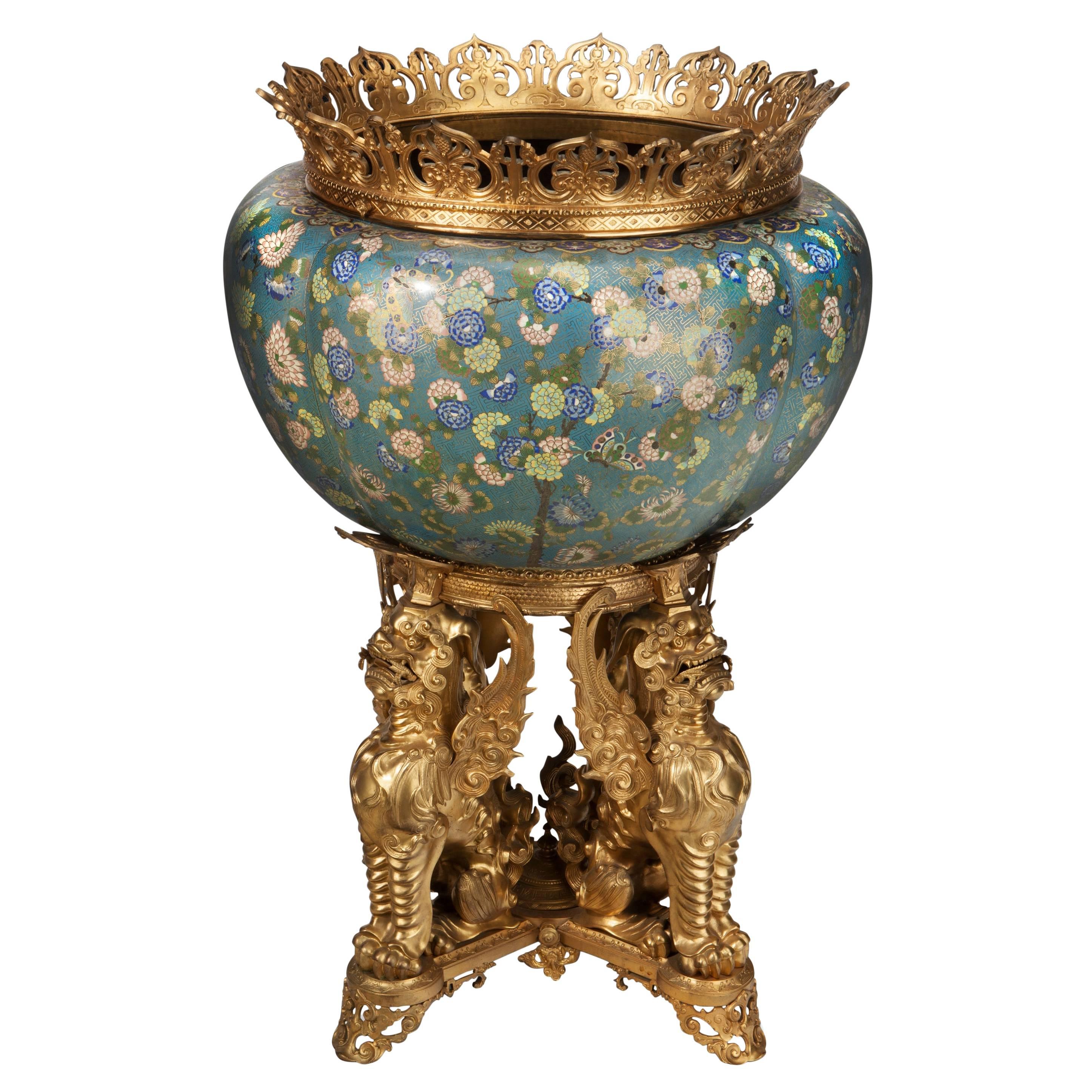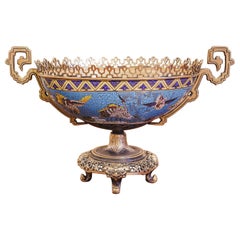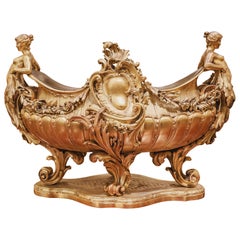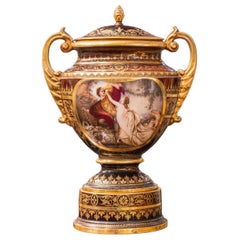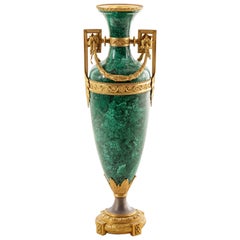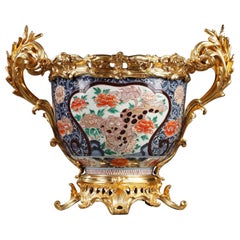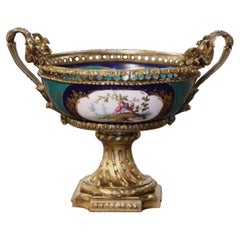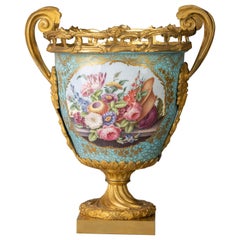Items Similar to Fine 19th Century French Gilt Bronze and Imari Porcelain Cachepot
Want more images or videos?
Request additional images or videos from the seller
1 of 7
Fine 19th Century French Gilt Bronze and Imari Porcelain Cachepot
$13,500
£10,193.75
€11,826.85
CA$18,971.74
A$21,137.20
CHF 11,034.62
MX$256,633.75
NOK 138,697.94
SEK 131,103.25
DKK 88,285.98
About the Item
A fine and large 19th century French gilt bronze mounted centerpiece with a Imari porcelain decorated bowl. Fine quality.
- Dimensions:Height: 16 in (40.64 cm)Width: 16 in (40.64 cm)Depth: 12 in (30.48 cm)
- Style:Louis Philippe (In the Style Of)
- Materials and Techniques:
- Place of Origin:
- Period:
- Date of Manufacture:1880
- Condition:Wear consistent with age and use.
- Seller Location:Dallas, TX
- Reference Number:1stDibs: LU873232071162
About the Seller
5.0
Vetted Professional Seller
Every seller passes strict standards for authenticity and reliability
Established in 1986
1stDibs seller since 2009
87 sales on 1stDibs
Typical response time: <1 hour
- ShippingRetrieving quote...Shipping from: Dallas, TX
- Return Policy
Authenticity Guarantee
In the unlikely event there’s an issue with an item’s authenticity, contact us within 1 year for a full refund. DetailsMoney-Back Guarantee
If your item is not as described, is damaged in transit, or does not arrive, contact us within 7 days for a full refund. Details24-Hour Cancellation
You have a 24-hour grace period in which to reconsider your purchase, with no questions asked.Vetted Professional Sellers
Our world-class sellers must adhere to strict standards for service and quality, maintaining the integrity of our listings.Price-Match Guarantee
If you find that a seller listed the same item for a lower price elsewhere, we’ll match it.Trusted Global Delivery
Our best-in-class carrier network provides specialized shipping options worldwide, including custom delivery.More From This Seller
View AllA very fine 19th century French Cloissone 11and gilt bronze centerpiece
Located in Dallas, TX
A fine 19th century French Orientalist period Cloissone and bronze centerpiece.
Category
Antique Mid-19th Century French Chinese Export Decorative Bowls
Materials
Bronze
A very fine 19 th c French gilt bronze planter or centerpiece. Original liner
Located in Dallas, TX
A fine 19th century large French Louis XV gilt bronze figural centerpiece or planter . Fine casting .
Category
Antique Late 19th Century French Louis XV Planters, Cachepots and Jardin...
Materials
Bronze
A very fine Palatial 19th century Royal Vienna porcelain urn . Signed Wagner
By Franz Wagner
Located in Dallas, TX
A very fine and rare 19th century Royal Vienna Austrian vase. Palatial in size with the finest details . A hand painted classical scene signed Wagn...
Category
Antique Late 19th Century Austrian Belle Époque Vases
Materials
Porcelain
Fine Large Early 20th C Louis XVI Style Gilt Bronze Mounted Malachite Urn
Located in Dallas, TX
A fine large early 20th century Louis XVI style gilt bronze mounted malachite urn.
Category
Early 20th Century French Louis XVI Urns
Materials
Malachite
Fine 19th Century Austrian Royal Vienna Porcelain Hand Painted Urn
Located in Dallas, TX
A fine 19th century Austrian Royal Viennese porcelain urn with hand painted classical scenes. Very fine detailed decoration.
Category
Antique Late 19th Century Austrian Neoclassical Urns
Materials
Porcelain
19th Century French Empire Malachite and Gilt Bronze Centerpiece
Located in Dallas, TX
Fine 19th century French Empire malachite and gilt bronze centerpiece. Cut crystal top bowl .Fine mercury gilt bronze sphinx's.
Category
Antique Late 19th Century French Empire Planters, Cachepots and Jardinières
Materials
Malachite
You May Also Like
Large Imari Porcelain Planter, France, Circa 1880
Located in PARIS, FR
Japanese porcelain and French gilded bronze mount.
Important Imari Porcelain planter with a polychrome and golden decoration of cranes, carp and lion, on a blue vermiculated backgro...
Category
Antique 1880s French Louis XV Planters, Cachepots and Jardinières
Materials
Bronze
Chinese Enamel and French Gilt Bronze Chinoiserie Jardinière
Located in London, GB
Chinese enamel and French gilt bronze Chinoiserie jardinière
The enamel Chinese and the gilt bronze French, 19th century
Measures: Height 40cm, width 53cm, depth 30cm.
This Chin...
Category
Antique 19th Century French Chinoiserie Planters, Cachepots and Jardinières
Materials
Ormolu, Bronze, Enamel
$9,369 Sale Price
20% Off
19th Century French Sevres Bronze Dore and Hand Painted Porcelain Jardinière
By Manufacture Nationale de Sèvres
Located in Dallas, TX
Attributed to the Manufacture de Sevres this elegant, antique jardinière was crafted in Paris, France, circa 1860. Standing on a twisted bronze dore base, the colorful centerpiece...
Category
Antique Mid-19th Century French Louis XVI Planters, Cachepots and Jardin...
Materials
Bronze
French Gilt Bronze and Porcelain Two-Handled Centerpiece Vase, circa 1875
Located in New York, NY
With lush floral still-lives on either side. The sky-blue ground with intricate floral and scroll gilding. The interior lip of the porcelain with similar gilt scroll work. The gilt b...
Category
Antique 1870s Vases
Materials
Porcelain
Classical 19th Century French Majolica porcelain and ormolu urn.
Located in Brighton, Sussex
A very good quality 19th century French cobalt and turquoise blue majolica porcelain urn, with wonderful gilded ormolu mouldings and mounts of putti holding garlands of flowers, amon...
Category
Antique Late 19th Century French Classical Greek Planters, Cachepots and...
Materials
Ormolu
Ormolu and Cloisonné Enamel Jardinière Attributed to F. Barbedienne
By F. Barbedienne Foundry
Located in London, GB
The large central circular form cloisonne enamel jardinière decorated with vari colored plum flowers and butterflies on a blue ground, with a pierced ormolu rim featuring a pineapple motif resting on a finely cast ormolu base with four legs in the form of winged Foo lions.
The ormolu French, the enamel Chinese.
This impressive jardinie`re is very much in the manner of objects in enamel produced by Ferdinand Barbedienne in Paris in the last quarter of the 19th century which proved universally popular. Often these pieces were designed by Edouard Lievre (d. 1886) in the Oriental taste.
Ferdinand Barbedienne was a famous French metal worker and manufacturer. He presided over one of the most renowned and prolific foundries of Belle Époque Paris. His atelier created sculptures, clocks and bronze mounts of the highest quality, and his works were shown at numerous international exhibitions of the period, where he was rewarded with many medals. Among them the Grande Me´daille d'Honneur, in Paris in 1855 is particularly noteworthy.
In 1838 he associated with the engineer Achille Collas (1795-1859) who had just invented a process to reproduce statues at a smaller scale.
Together they founded in 1839 the company "Collas et Barbedienne" to reproduce casts of both contemporary artists and Greek and Roman antiquities. While working with Collas, Barbedienne actively pursued contracts with many sculptors of Paris contracting with David D'Angers, Jean-Baptiste Clesinger, and even producing some casts for Antoine Louis Barye as well as others. From 1860 to the years 1890, Barbedienne, eager to research new processes, experimented new techniques in champleve´ and cloisonne´-enamels, to compete with Japanese importations, very fashionable then.
When Collas died in 1859, the business was left to Barbedienne as sole owner. The company who had over 300 employees was prosperous as well in the field of reproductions as in its department specialized in the casting of monumental bronzes.
In 1865, he was appointed President of the Reunion of Bronze Makers until 1885.
After the 1870 war...
Category
Antique Late 19th Century French Chinoiserie Planters, Cachepots and Jar...
Materials
Enamel, Ormolu
More Ways To Browse
Antique Imari Porcelain
Gold Imari Vases
Imari Vase Large
Bronze Gilt Bowl
French Gilt Bronze Bowl
Large Porcelain Centerpiece Bowl
19th Century Large Imari Vase
Gold Imari Bowl
Imari Bronze
Large Imari Bowl
Imari Jardiniere
Imari Planter
Imari Vase Bronze
Imari Cachepot
Imari Vase Planter
Large Imari Jardiniere
Large Imari Planters
Large Outdoor Vases
